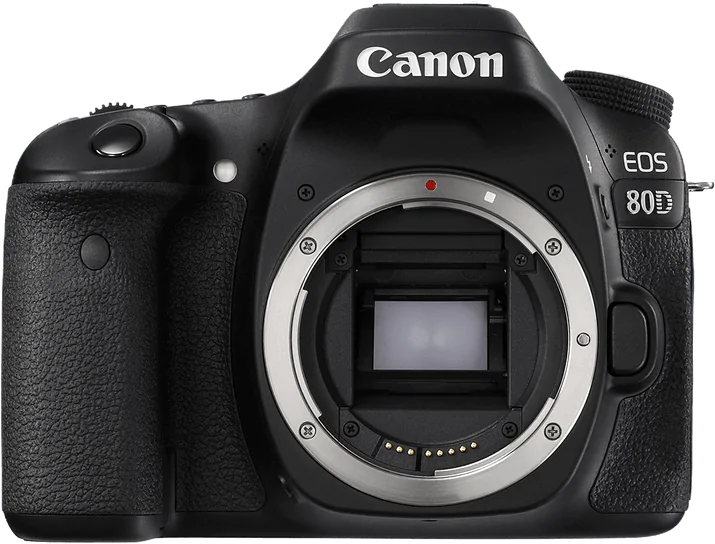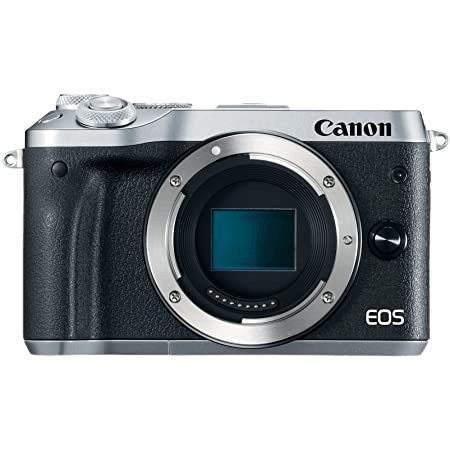Canon EOS 80D vs EOS M6 Comparison
Canon EOS 80D

Canon EOS M6

The Canon EOS 80D narrowly edges out the Canon EOS M6 with a score of 64/100 versus 63/100. Both cameras share similarities, such as being released in 2016 and 2017, respectively, and having similar announcement dates. The 80D, a DSLR, is superior due to its larger size (139 x 105 x 79mm) and heavier weight (730g), which can provide better stability and handling for some users.
On the other hand, the M6, a mirrorless camera, has its advantages with a smaller size (112 x 68 x 45mm) and lighter weight (540g), making it more portable and convenient for travel. Additionally, the M6’s launch price of $780 is significantly lower than the 80D’s $1200 price tag, providing more value for those on a budget.
Taking these points into consideration, the 80D might be more suitable for those wanting a more robust and stable camera, while the M6 is better suited for travelers and budget-conscious photographers.
Canon EOS 80D vs EOS M6 Overview and Optics
The Canon EOS M6 outperforms the Canon EOS 80D in optics, scoring 65/100 compared to the 80D’s 63/100. Both cameras share several specifications, including a 24.2-megapixel CMOS sensor, an APS-C sensor size, and a lack of image stabilization. The similarities in these features contribute to their comparable scores in optics.
The EOS M6 has advantages over the 80D in terms of shooting speed and processor. With a shooting speed of 9 frames per second, the M6 is faster than the 80D, which has a shooting speed of 7 frames per second. Additionally, the M6 boasts a more advanced Digic 7 processor, while the 80D uses the older Digic 6 processor. These factors contribute to the M6’s higher optics score.
On the other hand, the EOS 80D has a slightly higher DXOMARK score for its sensor, registering 79 points compared to the M6’s 78 points. This difference indicates that the 80D’s sensor performance is marginally better than that of the M6. Additionally, the 80D uses a Canon EF-S lens mount, which provides a wider selection of lenses compared to the M6’s Canon EF-M lens mount. This advantage could be beneficial for photographers who require versatility in their lens options.
Taking these factors into account, the Canon EOS M6 is the superior camera in terms of optics, primarily due to its faster shooting speed and more advanced processor. However, the Canon EOS 80D should not be overlooked, as it offers a marginally better sensor performance and a wider range of lens compatibility. Ultimately, the choice between these cameras will depend on the specific needs and preferences of the photographer.
Canon EOS 80D vs EOS M6 Video Performance
When comparing the video capabilities of the Canon EOS 80D and Canon EOS M6, both cameras have a video score of 70/100, indicating that they are equal in this aspect. The similarities between the two cameras are evident in their specifications, as both offer Full HD video resolution with maximum dimensions of 1920 x 1080 and a maximum video frame rate of 60fps. Additionally, both cameras have built-in time-lapse functionality.
The Canon EOS 80D, being an equal competitor in video capabilities, does not surpass the Canon EOS M6 in any specific video-related features. Both cameras share identical video specifications, making them suitable for users seeking similar video performance.
On the other hand, the Canon EOS M6, despite having the same video score as the Canon EOS 80D, does not excel in any particular video-related aspects. As both cameras have the same score and specifications, it is not possible to determine a clear winner based on video performance alone.
Taking into account the identical video specifications and scores of the Canon EOS 80D and Canon EOS M6, potential buyers can conclude that both cameras offer comparable video capabilities. Users seeking a camera for video purposes will find that either option can provide satisfactory results, as there are no significant differences between the two in terms of video performance.
Canon EOS 80D vs EOS M6 Features and Benefits
The Canon EOS 80D and the Canon EOS M6 both have a feature score of 70/100, indicating that they share many similar specifications. These cameras have the same 3-inch screen size and 1040000-dot screen resolution. Both cameras also have touchscreens, flip screens, WiFi capabilities, and no GPS.
The Canon EOS 80D stands out in certain aspects. It is an excellent camera that offers good image quality and a wide range of features. However, it does not have Bluetooth capabilities, which is a drawback compared to the M6.
On the other hand, the Canon EOS M6 has Bluetooth capabilities, making it more convenient for users who wish to transfer files wirelessly and connect to other devices. This feature gives the M6 an edge over the 80D in terms of connectivity.
Despite their identical feature scores, each camera has its own strengths. The Canon EOS 80D is a solid choice for users who prioritize image quality and a wide range of features. The Canon EOS M6, with its Bluetooth capabilities, is a better option for those who value seamless connectivity and file transfers.
In comparing these two cameras, both have strong features that cater to different user preferences. The Canon EOS 80D is a reliable camera with great image quality, while the Canon EOS M6 offers additional connectivity options with its Bluetooth feature. Users should consider their individual needs and priorities when choosing between these two cameras.
Canon EOS 80D vs EOS M6 Storage and Battery
The Canon EOS 80D outperforms the Canon EOS M6 in storage and battery with a score of 43/100, while the M6 scores 16/100. Both cameras share some common specifications, including having one memory card slot and accepting SD, SDHC, and SDXC memory cards. Additionally, neither camera offers USB charging.
The EOS 80D has a superior battery life, capable of taking 960 shots on a single charge using its LP-E6N battery. This is a significant advantage over the EOS M6, which has a limited battery life of 295 shots using its LP-E17 battery.
Although the EOS M6 does not have any notable advantages in storage and battery compared to the EOS 80D, it is worth mentioning that it is compatible with the same memory card types as the 80D, which provides a level of convenience for users who may already own these cards.
Based on these factors, the Canon EOS 80D is the clear winner in terms of storage and battery performance, providing a longer battery life and maintaining compatibility with commonly used memory cards. The Canon EOS M6 falls short in this comparison, offering only a limited battery life and no additional storage advantages.
Alternatives to the Canon EOS 80D and EOS M6
Are you still undecided about which camera is right for you? Have a look at these popular comparisons that feature the Canon EOS 80D or the Canon EOS M6:

